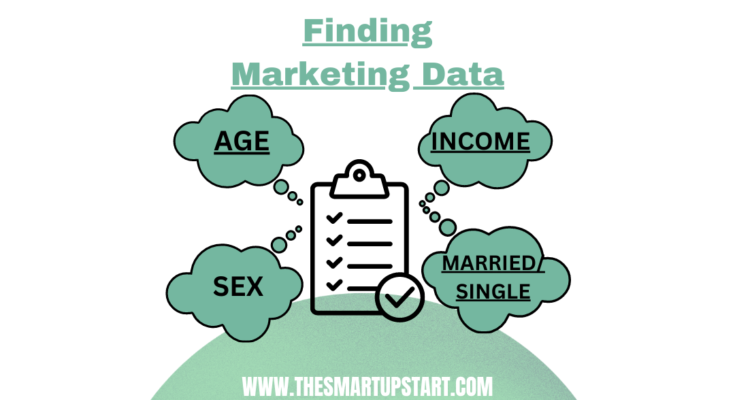How can a start-up or new business gather market data if you don’t have the money to buy it?
When developing a business plan, one crucial aspect is gathering market data to support your strategies and sales projections. Often, potential financiers or lenders will look for documentation to support your sales claims and to justify your financial projections. The most prominent way to provide market data is by purchasing data from organizations that provide market data specifically for your industry. For example, if you were planning to launch a cafe or coffee roasting business, The National Coffee Association offers an annual report that provides insight to the coffee market. Another example is Ibis World, which is an industry leader that provides general market reports for nearly every industry.
There are numerous reputable trade organizations and general market data mining companies who sell market data in the form of reports to those in need, however the cost for purchasing this data can be expensive. As a result new business owners often lack the necessary data to support their business plan. An alternative and more cost-effective approach is to simply gather the data yourself through surveys. In this article, we will explore the power of surveys as a simple yet effective way to collect market data that can fuel your business success.
- The Importance of Market Data
- Surveys as a Data Collection Tool
- Crafting Effective Survey Questions
The Importance of Market Data:
Market data plays a pivotal role in shaping business decisions, understanding consumer behavior, and identifying emerging trends. Armed with accurate and relevant information, you can make informed choices regarding product development, pricing strategies, and target audience identification. This knowledge empowers you to position your business effectively and cater to the needs and preferences of your potential customers. Additionally, it allows you to speak confidently about your business and business plan, while helping you target your ideal customer.
Surveys as a Data Collection Tool:
Surveys are a versatile and valuable tool for gathering market data. By designing and administering surveys, you can directly engage with your target audience and extract valuable insights. Tailoring survey questions to address specific aspects of your business plan allows you to acquire data that supports your sales projections, pricing decisions, and consumer segmentation.
Crafting Effective Survey Questions:
To ensure the effectiveness of your survey, it’s important to design questions that yield actionable data. Suppose you plan to launch a business selling sandals. Here are some examples of survey questions that can provide valuable market insights for a hypothetical sandal business:
- What age group are you in? a) 18-24 b) 25-34 c) 35-41 d) 41 and up
- How often do you buy sandals? a) Once a year b) Once every few months c) Once a month d) Weekly
- How much do you typically spend when purchasing sandals? a) $40.00 and up b) $25.00-$39.00 c) $20.00-$24.00 d) Less than $20.00
- What attracts you to sandals? a) Price b) Design c) Color d) Comfort
By analyzing responses to these questions, you can gain insights into consumer preferences, purchasing patterns, and factors influencing their buying decisions. This information helps shape your business strategy and allows you to tailor your product offerings to meet customer expectations.
Tips for Crafting An Effective Survey:
- Ask questions that lead to specific desired information – For example, if you want to know how much people spend on average when they dine out, be sure to include a question inquiring on how much they spend.
- Limit the amount of questions to less than 10 – An ideal number of questions is 5. While people typically don’t mind answering questions, you have to understand that there is no incentive for them to help you. Make your survey as painless as possible and you are likely to get more responses. The more questions that you have on your survey, the less people are likely to respond.
- Compile the Data – Compile the data into easy to understand sentences and graphics. Using the “Dining Out” survey, you can include information such as “76% of people surveyed dined out at least once per week and spent an average of $50 per person”. Charts and graphs are another way to make information easily understandable.
Conclusion:
Acquiring market data is an essential step in developing a successful business plan. While purchasing data from trade associations is one option, surveys provide a simple and cost-effective means to gather valuable insights directly from your target audience. By crafting well-designed survey questions and analyzing the responses, you can gain a deeper understanding of consumer behavior, refine your strategies, and position your business for growth. Embrace the power of surveys as a valuable tool in your market research arsenal and unlock the potential for business success.





6 Comments on “Marketing Plan Hacks! 3 Steps to Gathering Market Data When You Have No Money”